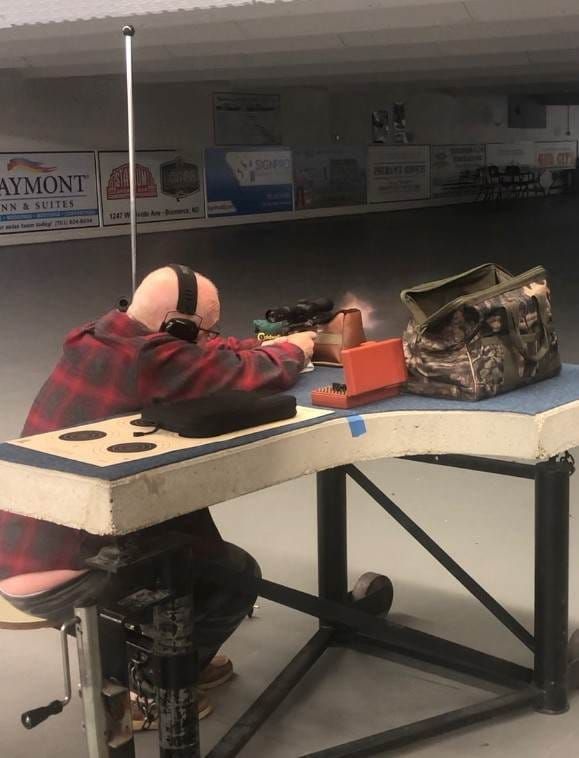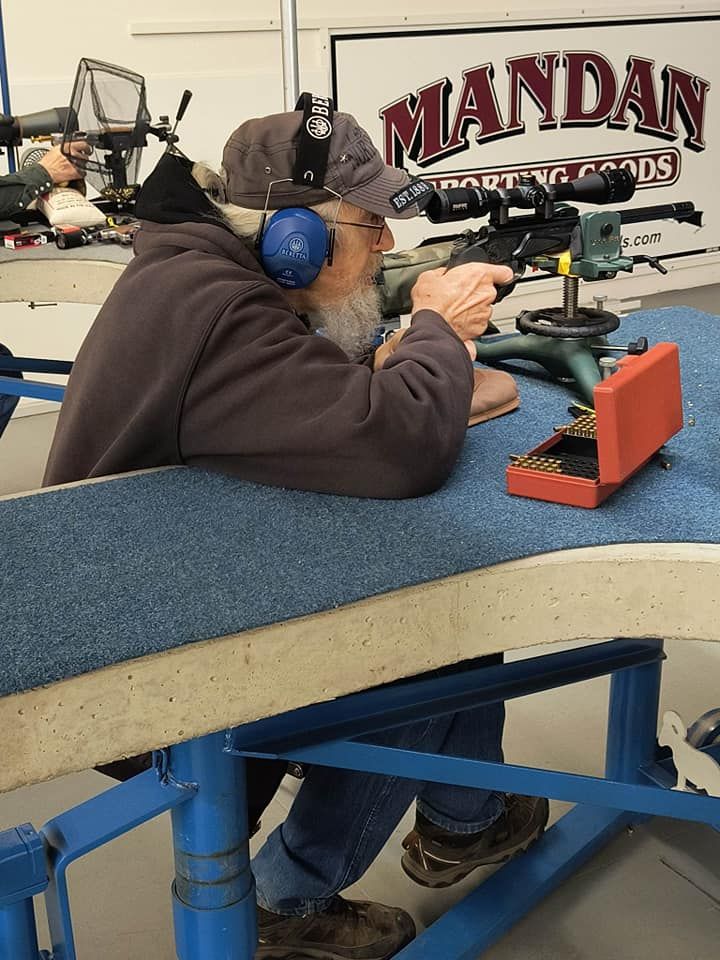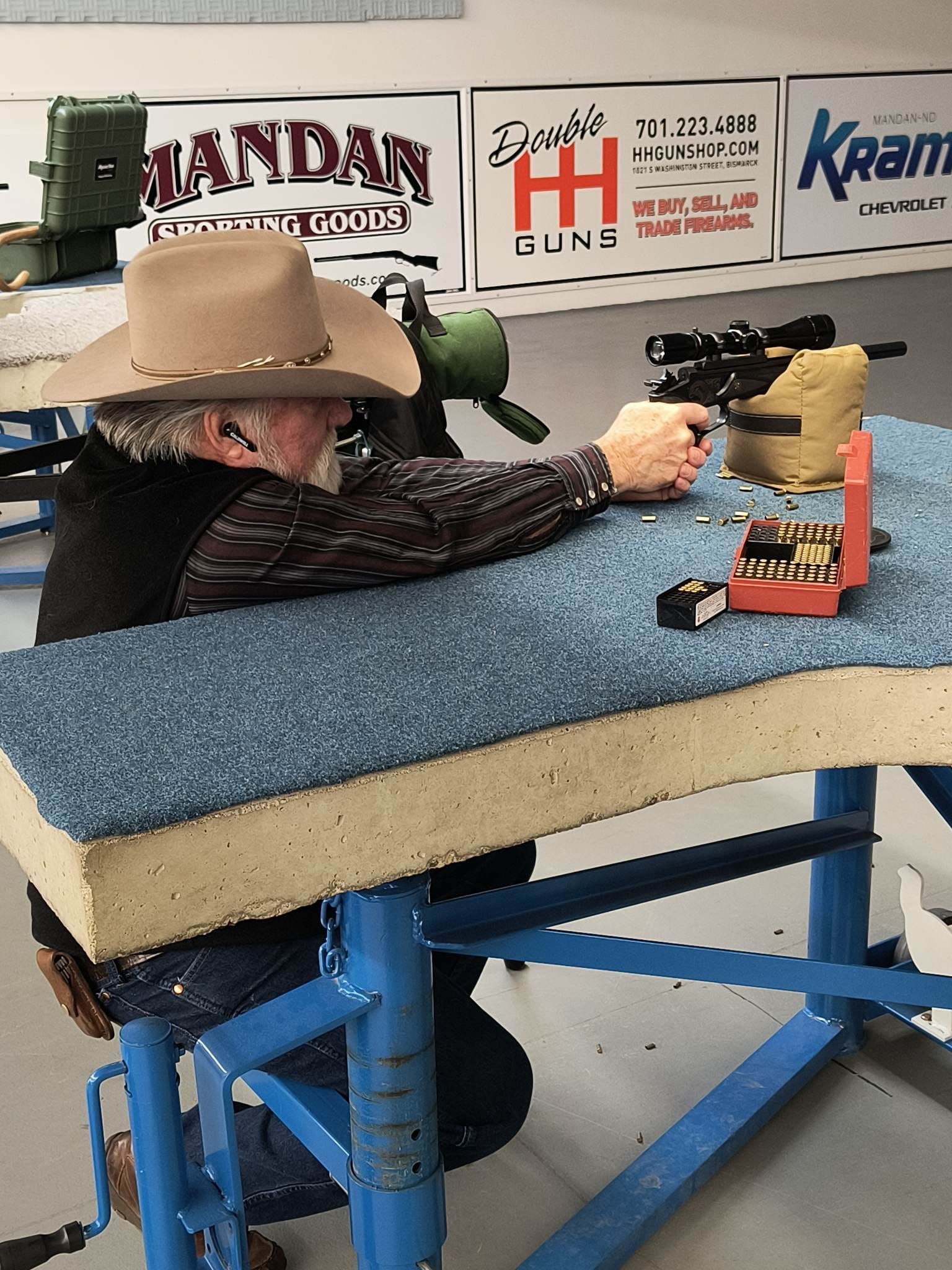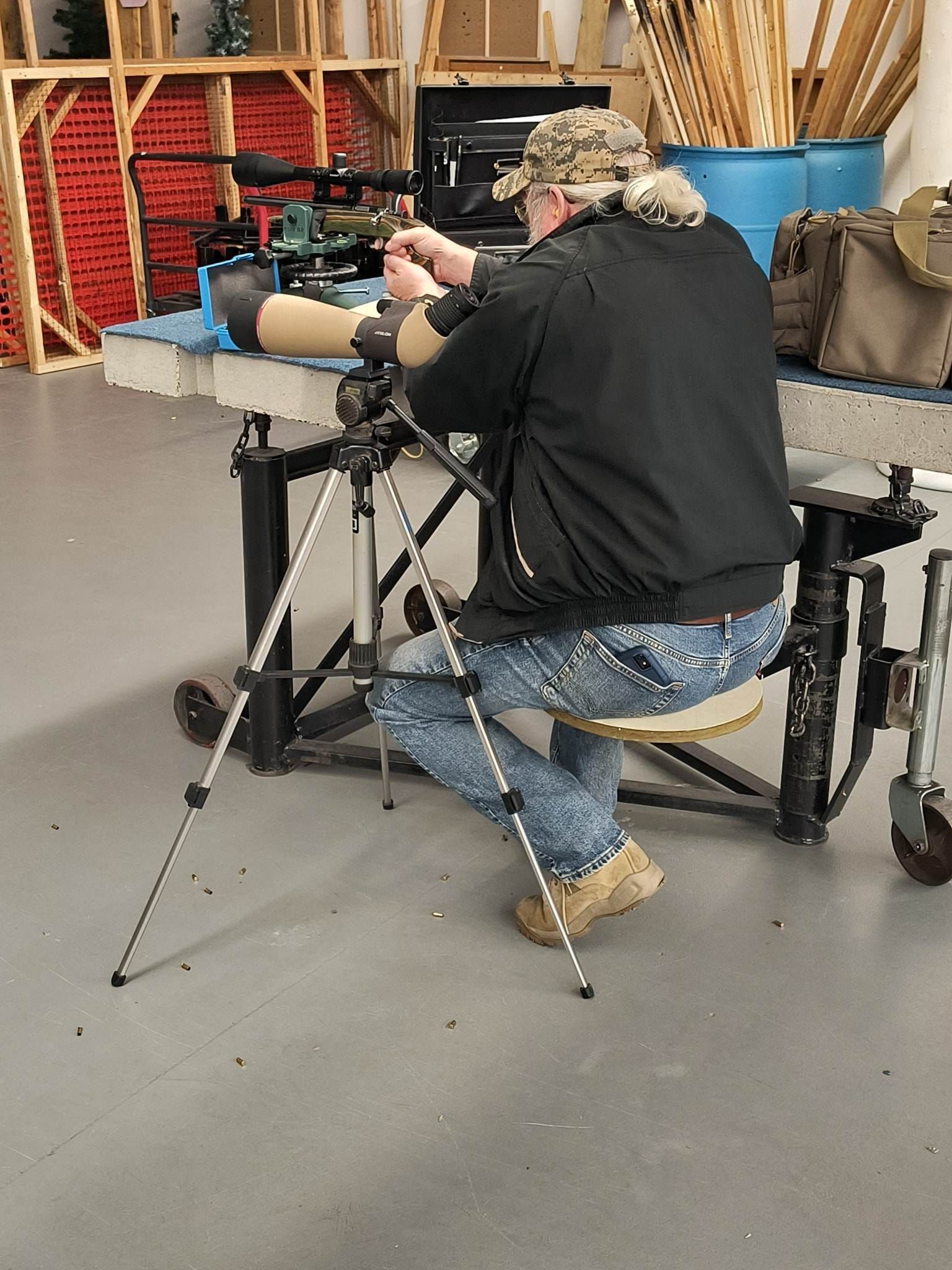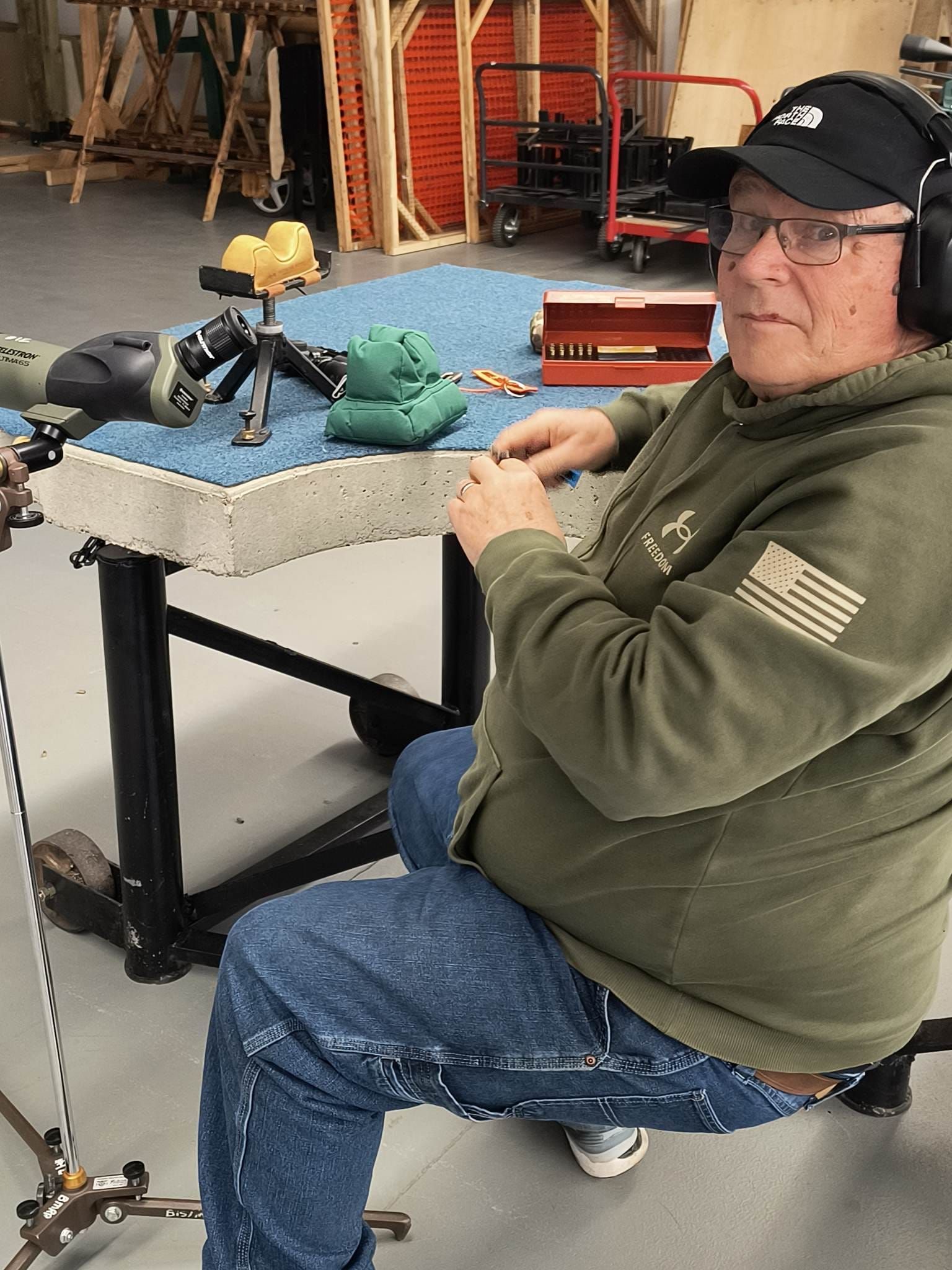Rifle Silhouette
Discipline Description
Instant gratification is the best way to describe this fast-paced sport. Shooters fire at banks of steel plates resembling the life-sized outlines of chickens (set at a distance of 200 meters), pigs (at 300 meters), turkeys (at 385 meters), and sheep (at 500 meters). A shooter is given 2.5 minutes to fire one round at each of the five targets in a bank. Unlike shooting at paper targets, when the metallic targets are hit, a distinct audible “clang” is heard as the target topples from its stand. Misses produce a telling visible cloud of dust.
Originally developed in Mexico (where it was known as “Siluetas Metalicas”), it was brought across the border as a hunter’s game by Southwestern riflemen in the 1960’s. True silhouette shooting today applies to the high-power game generally shot with a centerfire bolt-action rifle of 6 mm or larger caliber. However, the term “silhouette” is used, loosely, to include all shooting using metal targets shaped like game animals.
COURSES OF FIRE
The sport dramatically increased in popularity during the early 1970’s when the NRA incorporated it into its competition event schedule. It now includes many classes. The main two are:
NRA High Power Rifle – Caliber 6 mm or larger, provided no belted cartridges or Magnums are allowed.
NRA Smallbore Rifle – Factory loaded .22 caliber short, long, or long rifle rimfire cartridges fired at one-fifth scale targets at distances from 40 to 100 meters.
One of the best aspects of this sport is that the use of a specially built rifle is not required for success. Many beginners start out with a favorite hunting rifle equipped with a 4-power scope, so costs can be less than for other types of competitions. Scopes are allowed in most events and some competitors use optics with magnification settings of 12-power or more. All shooting is from the off-hand position with steadying accessories such as adjustable or hooked butt plates, palm rests, padded shooting jackets and slings being disallowed.
EQUIPMENT
The NRA Rules book defines the rifles and pistols allowed in silhouette shooting. The rules define the most liberal allowable dimensions and weights. Any rifle or pistol which falls within these limitations can be used.
The items of equipment listed below are used in silhouette competition. The best part is that there is very little expense associated with silhouette shooting.
Spotting Scope – The use by the coach of a telescope or other optical device to spot shots is permitted.
Shooting Mat or Ground Cloth – Is permissible in Black Powder Cartridge Rifle competition and Long Range Pistol/Smallbore Pistol Freestyle competition.
Gloves – May be worn on either or both hands in pistol competition as long as they don’t provide artificial support. In rifle, they may be worn only for warmth.
Clothing – Commercial type trap and skeet vests and shotgun shooting shirts are allowed, as well as clothing normally suitable for existing climatic temperatures. Shooting coats, unnecessarily heavy clothing, or anything on the person that would provide artificial support, such as clothing having excess padding or stiffening material or clothing which restricts or supports the body in the shooting position, may not be worn.
High Power Rifles – Big game rifles, as well as varmint rifles, have proved to be quite satisfactory for this kind of competition and a number of rifles have been specially built. The use of a specially built rifle does not automatically guarantee a winning score. Since coaching is allowed, the presence of a good coach can make a great deal of difference although the individual shooter still has to perform to his best ability in order to win.
While there is no limitation on the magnification allowed in scopes, shooters now tend to use a scope that is twenty power or higher, although many still use a lower power.
While 6 mm is the smallest caliber allowed in High Power competition, it is well known that a 6 mm bullet will not knock the ram target off its stand reliably. For that reason, most silhouette shooters use larger calibers. The most popular one seems to be the .308 Winchester.
Smallbore Rifles – Smallbore Rifle silhouette is simply a miniature version of the High Power Rifle game. The rifle allowed is defined as being identical to the High Power Rifle, but must be chambered only for the unmodified .22 caliber rimfire short, long, or long rifle. No special hot loads, such as “stingers”, may be used. Except for the caliber restriction, all other equipment requirements are the same.
High Power and Smallbore Rifle silhouette both have a Hunter Rifle class where only hunting-style rifles may be used. These rifles are lighter in weight and very few modifications are allowed.
Pistols – Pistols allowed for Long Range Pistol silhouette are defined in the NRA Rules book and follow very closely the rules established by the International Handgun Metallic Silhouette Association (IHMSA). NRA Long Range Pistol silhouette has two basic pistol definitions and forms of competition:
Conventional – Allows minor modifications to a pistol.
Unlimited – Allows almost anything that can be done to a pistol within the limits of a 15-inch barrel and 4.5 pound weight limit.
Also associated with Long Range Pistol is a .22 caliber version called Smallbore Pistol that closely follows the Long Range Pistol courses.
NRA Hunter’s Pistol competition is one of the most popular of the NRA silhouette games. Since it is intended as a sport for distances up to 100 meters, only certain calibers are specified as allowable in the rules. The definition is very similar to that of Conventional Long Range Pistol, except that the barrel length is limited to 10.75 inches and the weight to 4.5 pounds. Scopes are allowed as well as open sights.
NRA Smallbore Hunter’s Pistol is fired with .22 caliber short, long or long rifle cartridges at the same distance and the same size targets as in Hunter’s Pistol. The targets are thinner material to permit reliable knockdown by the .22.
SILHOUETTE TARGETS AND TARGET STANDS
Silhouette targets can be cut from various types of steel. It has been found that low strength steels and some high strength steels are not satisfactory because of the extreme damage done to them by high velocity bullets.
For High Power Rifle, Black Powder Cartridge Rifle, and Long Range Pistol targets, abrasion resistant alloy steels should be used.
For Smallbore Rifle, it is not necessary to use the harder steels.
For Hunter’s Pistol, it is suggested that the harder steels be used for the closer targets. T-1 steel is required for Hunter’s Pistol chickens. The “feet” upon which the silhouettes rest should be of the same type of steel as the rest of the target.
Silhouettes are set on stands which should be, if possible, two to three feet from the ground so that they can fall free of the stand when hit. Silhouettes need not be painted black if another color makes them more visible. On some of the Eastern ranges, targets are painted white or even blaze orange.
Here’s an interesting article about the origins of silhouette shooting: A Silhouette Shooting Primer.
Come Visit Us!
Contact us with questions!
We will get back to you as soon as possible
Please try again later
The best shooting club in the Bismarck/Mandan area!
QUICK LINKS
SHOOTING DISCIPLINES
SEO and Design services provided by Design Wizards. Privacy Policy.
The content of this website including but not limited to the images or any other marks are the property of their respective copyright owners and designers. All images and marks are used under license from their owners. Any copying or downloading without express written permission is a violation of copyright law and is prohibited.
